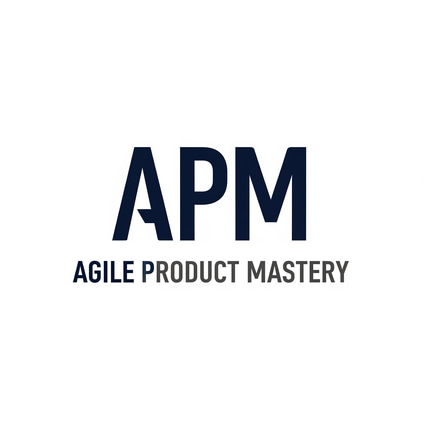3 Things I Learned from Managing High-Stakes Projects in Regulated Environments
Learn 3 hard-won lessons from leading Agile projects in regulated industries—master clarity, governance, and regulatory value under pressure.
AGILE IN REGULATED ENVIRONMENTSHIGH STAKES PROJECT LEADERSHIPCOMPLIANCE-DRIVEN PRODUCT DELIVERY
Written by: Matt Gregory - Founder Agile Product Mastery
6/2/20254 min read
When you’re managing large, high-stakes projects in regulated industries — financial services, energy, government — the rules of the game change. It’s no longer just about delivering quickly or innovating boldly. It’s about precision, clarity, and leadership under pressure.
Over the past 15+ years, I’ve led programs and digital transformations inside some of the most compliance-heavy, politically sensitive, and mission-critical environments in the business world. From trading platforms and risk systems to regulatory programs and audit remediation, I’ve seen what works — and what doesn’t — when the stakes are high.
Here are three key lessons that continue to shape how I lead, coach, and deliver in complex, high-risk environments.
1. Clarity Is More Important Than Certainty
In a regulated project, ambiguity is the norm — not the exception. You’re often working with incomplete data, evolving requirements, and a changing regulatory backdrop. The mistake many delivery teams make is assuming they must have certainty before they can move. In reality, clarity of next steps, constraints, and stakeholder expectations is far more valuable than absolute answers.
Why it matters:
Regulators and internal auditors don’t expect teams to know the unknowable. What they expect is a clear, traceable decision-making process, transparent assumptions, and defensible risk handling.
In one major transformation I led for a market risk system, the original project had stalled because the team kept chasing elusive “full requirements” from every stakeholder. When I came in, I shifted the mindset: instead of waiting for certainty, we focused on creating alignment around minimum clarity — what decisions we could make with the data we had. We mapped dependencies with ranges and assumptions, which gave leadership enough confidence to approve a phased plan.
The result? We re-ignited momentum, kept stakeholders engaged, and delivered our first compliant release on time.
Key Practices:
Use “Assumption Logs” to document decision bases when data is incomplete
Run “Clarity Workshops” with stakeholders to define what’s clear vs unclear
Use visual risk heatmaps to show where certainty is low, but clarity is managed
2. Governance Is Not the Enemy of Agility
One of the biggest myths in Agile circles is that governance processes inherently kill agility. In regulated industries, the word “governance” often triggers flashbacks of endless steering committees, weekly status reports, and mountains of documentation. But here’s what I’ve learned: governance, when designed well, enables delivery.
Why it matters:
In a high-stakes project, you need trust — from senior stakeholders, regulators, and cross-functional teams. Good governance builds that trust. It provides guardrails, not roadblocks.
For example, when I was leading a recovery effort on a failing digital program in the banking sector, we were dealing with intense executive scrutiny, two layers of risk oversight, and quarterly audit reviews. Most teams felt paralyzed by governance. My move? I introduced Agile Governance Cadences — lighter-weight forums that aligned to sprint and release cycles, gave stakeholders structured visibility, and used artefacts that served both delivery and compliance needs.
Stakeholders were better informed, blockers were removed faster, and teams regained autonomy because trust was rebuilt through visibility — not control.
Key Practices:
Create a single governance layer that maps to Agile rhythms (e.g. sprint reviews as status updates)
Standardise but minimise artefacts — one document, many uses
Empower Product Owners and Delivery Leads to present to governance forums directly
3. Product Thinking Must Include Regulatory Value
In product management, we talk a lot about user value, business value, and technical feasibility. But in a regulated environment, there’s a fourth dimension: regulatory value — the ability of a feature or system to meet compliance, audit, or control requirements.
Too often, Agile teams treat regulatory asks as “non-functional” — something bolted on at the end. That’s a mistake. If you’re managing a product or transformation in this world, regulatory outcomes must be part of your product strategy from day one.
Why it matters:
When regulatory value is sidelined, it creates downstream risk — late rework, compliance breaches, or outright project failure. But when it’s embedded into the product lifecycle, it becomes a source of differentiation. You’re not just “meeting requirements” — you’re enabling faster approvals, cleaner audits, and more resilient systems.
On a recent project involving market risk rule aggregation, we worked closely with our compliance and controls partners as if they were users — understanding their pain points, reviewing UI/UX with them, and co-designing traceability features. That collaboration didn’t slow us down — it helped us build better.
We delivered a system that was not only audit-ready on day one, but also more intuitive for risk teams — and we avoided months of post-release remediation work.
Key Practices:
Define Regulatory Value Stories during discovery (e.g. “As a regulator, I need to see a full audit trail…”)
Treat Compliance and Risk as key personas in your user ecosystem
Prioritise features that reduce manual controls or future audit costs
Final Thoughts: Pressure Can Be a Catalyst
Managing projects in high-stakes, high-regulation environments is not for the faint of heart. The margin for error is small, the expectations are high, and the spotlight is always on.
But here’s the upside: pressure sharpens delivery discipline.
You learn to make better decisions with limited data. You get clearer about value, risk, and outcomes. You become a better communicator, a more resilient leader, and a sharper strategist.
And most importantly — you build products and programs that don’t just work. They stand up to scrutiny.
TL;DR – 3 Lessons at a Glance
1. Clarity beats certainty
Don’t wait for perfect information — move with confidence in what’s clear
2. Governance can boost agility
Design lean governance that supports delivery rather than blocking it
3. Regulatory value is real value
Treat compliance and audit outcomes as core to your product strategy
If you’re a delivery lead, product manager, or transformation coach working in a regulated industry — know this: agility and compliance can co-exist. In fact, when done right, they make each other better.
Want to explore more about Agile Product Management in regulated industries?
Subscribe for insights, frameworks, and real-world tools at Agile Product Mastery.
Let’s build smarter — even when the pressure’s on.


© Agile Product Mastery — Build a career that scales. Not one that burns out.
Powered by Baltimore Advisory Pty Ltd — ABN 97 678 312 475 — All rights reserved
Follow us on LinkedIn
